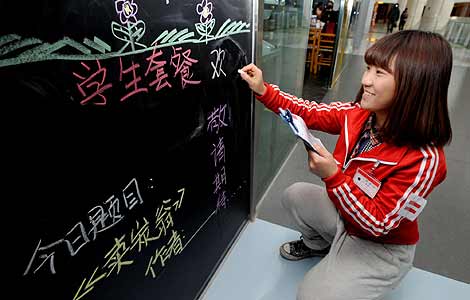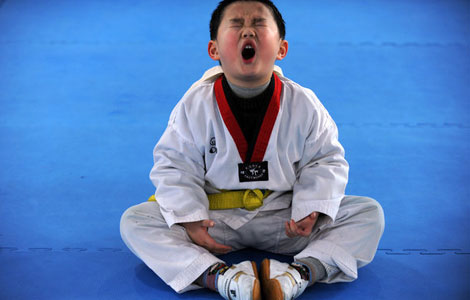Chinese enterprises aim for 'created in China'
Updated: 2012-01-16 13:30
(Xinhua)
|
|||||||||
BEIJING - When the 2012 Summer Olympic Games open on July 27 in London, China's largest down apparel company Bosideng will open its first European store near Oxford Street, the city's busiest shopping street, presenting a brand widely known in China to Londoners and visitors from across the world.
To house the store, the company spent 20.05 million pounds purchasing an entire building on nearby South Molton Street, making it the company's most expensive outlet.
The store is part of the company's long-term strategy to move upward in the value chain, morphing from a producer of inexpensive "made in China" goods to a global clothing brand that sells "created in China" goods with higher added value.
Gao Dekang, Bosideng's chairman, founded the company in the east coastal province of Jiangsu in the late 1970s, the same period of time that saw China's reform and opening up, with policy shifts that have propelled China's growth ever since.
Like many export-oriented manufacturers in east China, the company soared with the Chinese economy, taking the global market with inexpensive goods, thanks to relatively cheap labor and land costs. But the company's competitive edge began to diminish when the global financial crisis began in 2008, causing production costs to soar.
"Gone for good is the era of the last 30 years, when Chinese clothing companies dominated the lower end of the global clothing market," Gao said. "Since the global economic crisis started, the cost of labor and raw materials has been rising in China, while labor costs remain very low in countries like Vietnam and Cambodia. All of this is creating a huge challenge for the Chinese clothing industry."
Gao said the solution to this problem is to seek out new competitive advantages based on innovation and design.
Bosideng has been doing exactly that. In addition to opening its store in London, the company spent a record high of 658 million yuan ($104 million) on research and development last year.
In the official and academic discourse in China, the move from "made in China" to "created in China" is generally seen as part of the country's economic transformation and industrial upgrading.
Wang Li, an economist from the Chinese Academy of Social Sciences who previously served as the United Nations' chief economist in China, said China's economic takeoff over the last 30 years relied almost entirely on exports and investment, and an adjustment is both necessary and inevitable.
In east China's Zhejiang province, the Wanxiang Group, a leading global auto parts supplier, began in 1969 as a village-level agricultural machine manufacturer and has thrived in the years since by making and exporting auto parts. The group has now expanded to emerging sectors such as electric vehicles and new energy.
"Developing electric cars is part of our industrial upgrading efforts. Doing this requires a lot of spending and equipment, but electric cars are the future," said Lu Guanqiu, founder and chairman of the Wanxiang Group.
The Wanxiang Group was hit hard by the global financial crisis, but not in the way one would expect. International demand jumped sharply as the crisis began, forcing the company to boost its global expansion and upgrade its industrial structure, Lu said.
Over the past few years, Wanxiang has purchased two U.S. auto part manufacturers, both of which are suppliers for leading global auto companies and have invested heavily in electric cars themselves.
China is currently in the second year of its 12th Five-Year Plan period (2011-2015), with industrial upgrading set as one of the country's top priorities for the period.
Zhuang Jian, a senior economist from the Asian Development Bank, said it will be difficult for Chinese companies to change from the "made in China" mentality, adding that although industrial upgrades are expensive and difficult, they are best initiated "sooner than later."
- Q4 GDP growth expected to drop below 9%
- Beijing home prices drop 11.3% in 2011
- Saudi oil refinery deal shows close ties
- Olympic venues face financial woes
- Shoemakers head home for profits
- Having bottle to invest in red wine
- China considers expanding RQFII program: report
- Weather puts rail system to test








